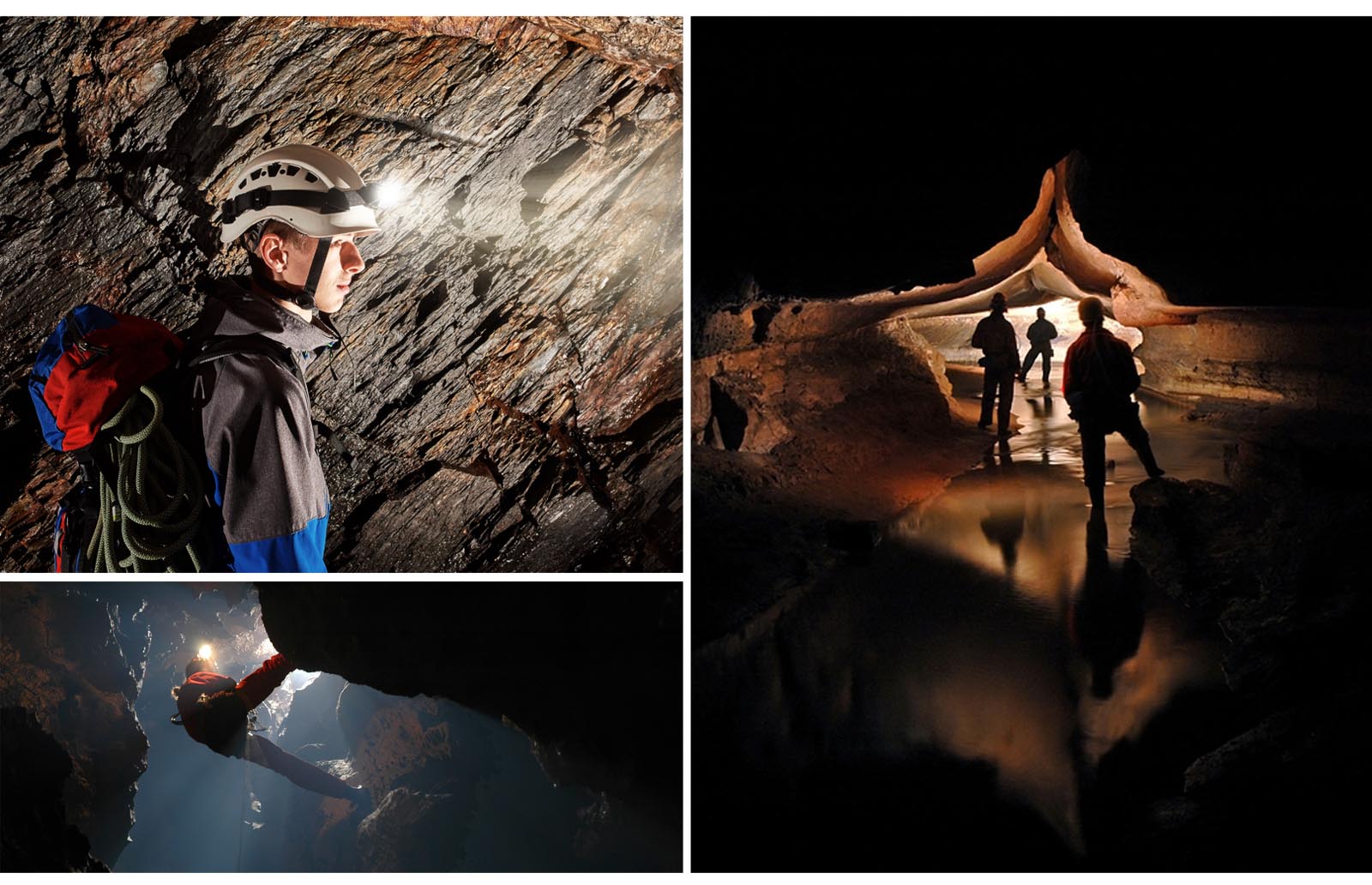What Is Spelunking?
June 15, 2021

Spelunking, also known as caving, is not for the timid. This increasingly popular sport often asks you to walk, climb or crawl blindly into the darkness with only a headlamp and spiders and bats for company. Sometimes, it even requires the use of a zip line, sending you into the abyss fast and without a second thought as to what lies ahead. Other times, spelunking requires you to dive into a black hole underwater. Either way, the challenge does come with its rewards.
But what is spelunking, exactly? In this guide, we explore the unique underground sport of spelunking and cover some of the basics on safety and what to wear as you belly-crawl through chasms and hollows.
And remember: Whether you shimmy through a crevice that’s dry and dusty or walk through larger splits and cracks in a mountain’s belly, be sure to keep your gear and personal items protected. Bring along a watertight case and your DSLR camera secure in a camera hard case that can take on the accidental beating against rocks.
Basic Safety Tips for Spelunking
Spelunking is not for those who are claustrophobic, afraid of the dark or terrified of bats or bugs. However, if you don’t fall into those fear categories, there are still some basic safety measures you need to take.
Avoid the Rainy Season
Spelunking in cool temperate caves makes it a wonderful year-round activity and sport. But you will need to be wary of other elements, such as rains and downpours that can cause streams and flooding in certain areas. As a general rule, most cavers tend to avoid grottos and caves during the rainy seasons.
Never Travel Alone
Never go spelunking alone. While spelunking is a relatively safe sport, you never know what could happen. Even a sprained ankle or simple disorientation can be a big enough injury to need assistance out. Not to mention cell service might be extremely limited underground. So whatever you do, go spelunking with a friend or a group.
What to Wear Spelunking (and Other Must-Have Gear)

As you crawl and squeeze your way through caverns and compact spaces, spelunking requires you to wear minimal gear. From headlamps to comfortable, flexible clothes, here is a general idea of what to wear spelunking – plus some of the must-have pieces of gear to make your cavern adventure safe.
Flexible Clothes
Be sure to wear flexible clothes that are breathable. The trick is to choose clothes that are not too loose, which could potentially catch or snag on objects along your spelunking journey. Think long sleeve shirts and full-length pants, protecting your shins, elbows and other bare skin areas from getting cut or scratched.
Hiking Boots and Gloves
Pick a pair of hiking boots with a decent tread to offer traction and keep you from slipping on uneven cave floors. Make sure they are a comfortable fit and that the laces stay secure. You may not be able to bend over to tie laces once you get started spelunking. Also, slip on a pair of tough gloves to protect your palms as you guide your way through crevices and rocks.
Padding
Make sure to strap on some padding to your bony areas, like elbows and knees. You’ll be using these to crawl around a lot, especially the knees. Protecting them with elbow pads and knee pads will make your day of spelunking end on a good note, without injury or scrapes and burns.
Helmet
When spelunking, it’s critical to wear a helmet. You never know what kind of low-hanging crevices or stalactites are hidden outside your peripheral vision. Wearing a helmet can keep your noggin free of bumps and bruises that can cause a headache or worse.
Other Gear, Accessories, Etc.
Last, but not least, make sure to take the following extra bits of gear:
First Aid Kit – While you don’t exactly need the Ten Essentials for spelunking, it’s still important to carry a basic first aid kit to care for more minor injuries like scrapes and bruises.
Provisions – Pack enough food and water to stay hydrated and keep up your energy. Spelunking is much more challenging than you might first think, so keep some energy bars and a small hydration pack if it can fit.
Headlamps – Yes, that’s headlamps. Plural. You are in a cave, after all, and the last thing you need is to lose your light. So it’s better to be safe than sorry and do as the pros do – carry two headlamps. As opposed to a flashlight, a headlamp is also ideal, offering a hands-free experience that allows you to climb your way around. Make sure to bring backup batteries, too, just in case.
Where to Go Spelunking
Love the idea of crawling around caves? Check out the National Speleological Society (NSS) database to search by state and find the closest spelunking “grotto” near you. And if you can, make it to one of these top spelunking sites:
- Great Blue Hole, Belize
- Vancouver Island Caves, British Columbia, Canada
- Waitomo Glowworm Caves, New Zealand
- Fantastic Pit at Ellison's Cave, Georgia
- El Capitan Cave, Alaska
- Lost Sea Wild Cave Tour, Craighead Caverns, Tennessee
- Mammoth Cave, Kentucky

SIGN UP FOR EXCLUSIVE OFFERS
Sign up for our newsletter and get exclusive access to new product launches, special offers and much more.
RELATED BLOGS














